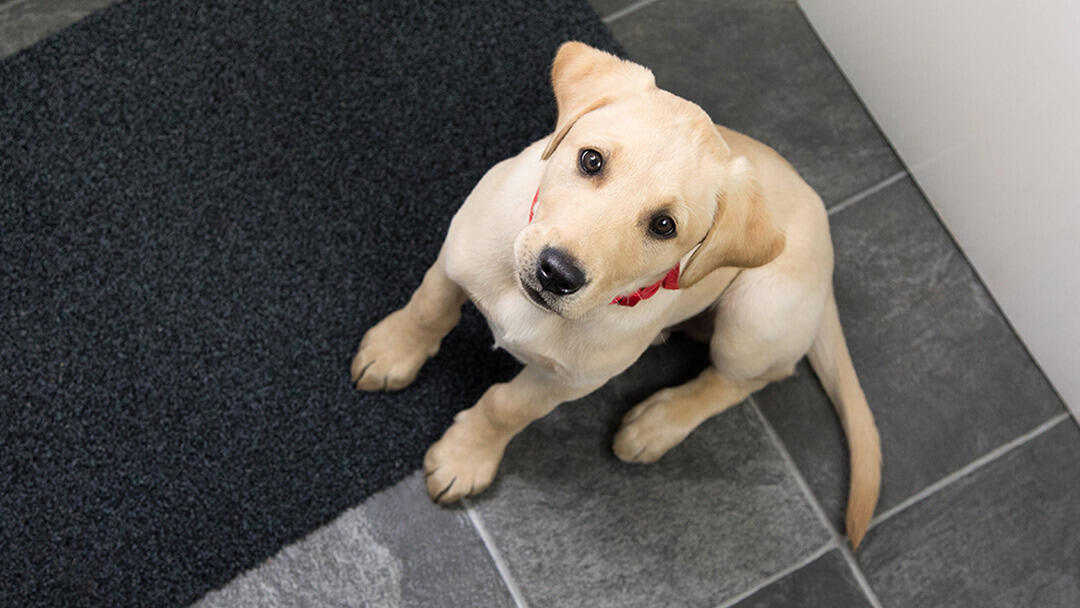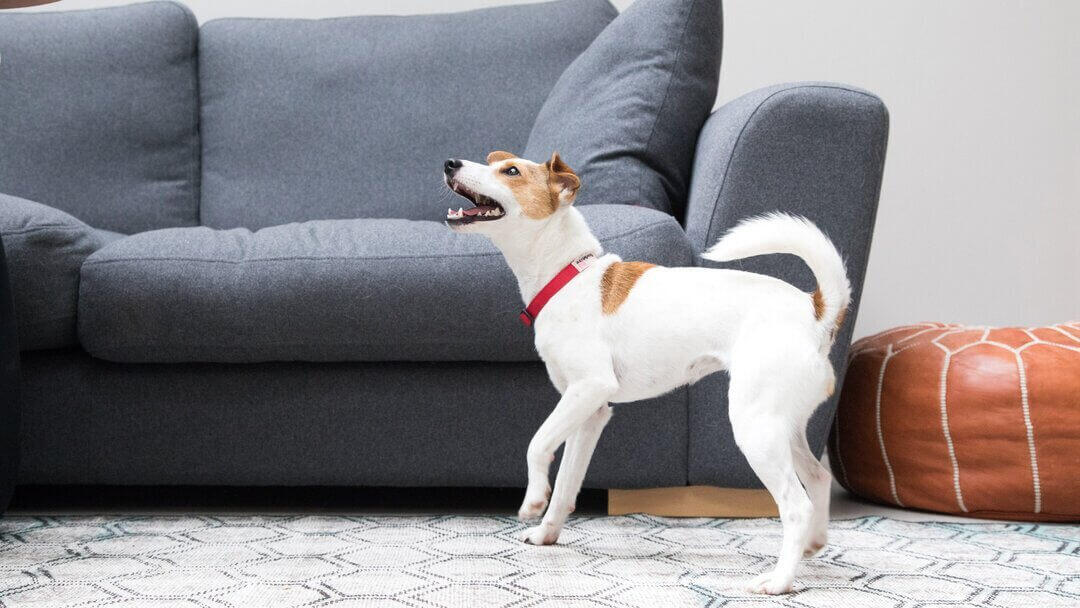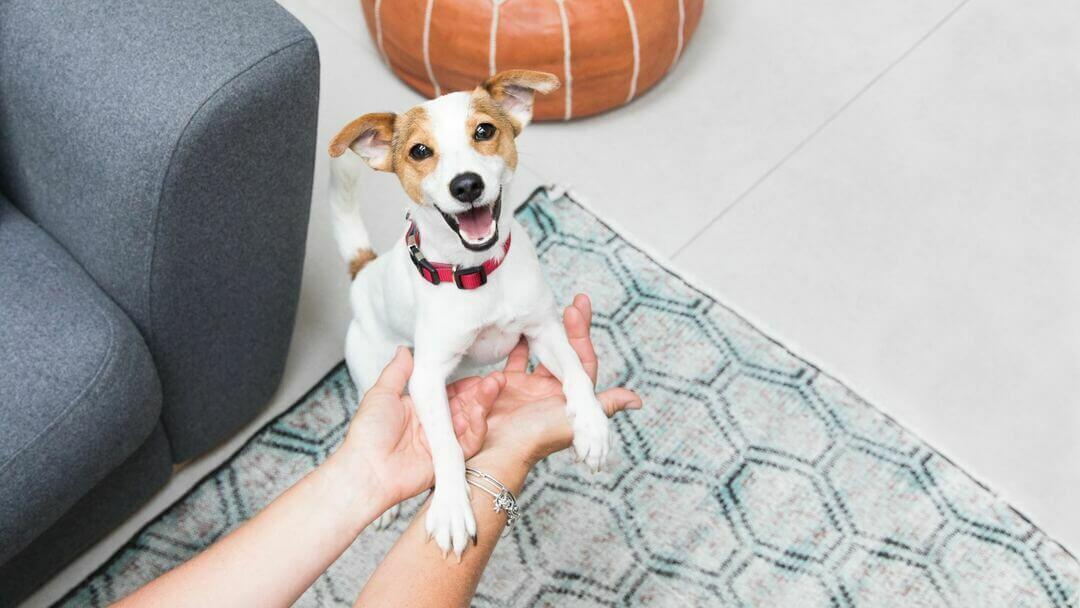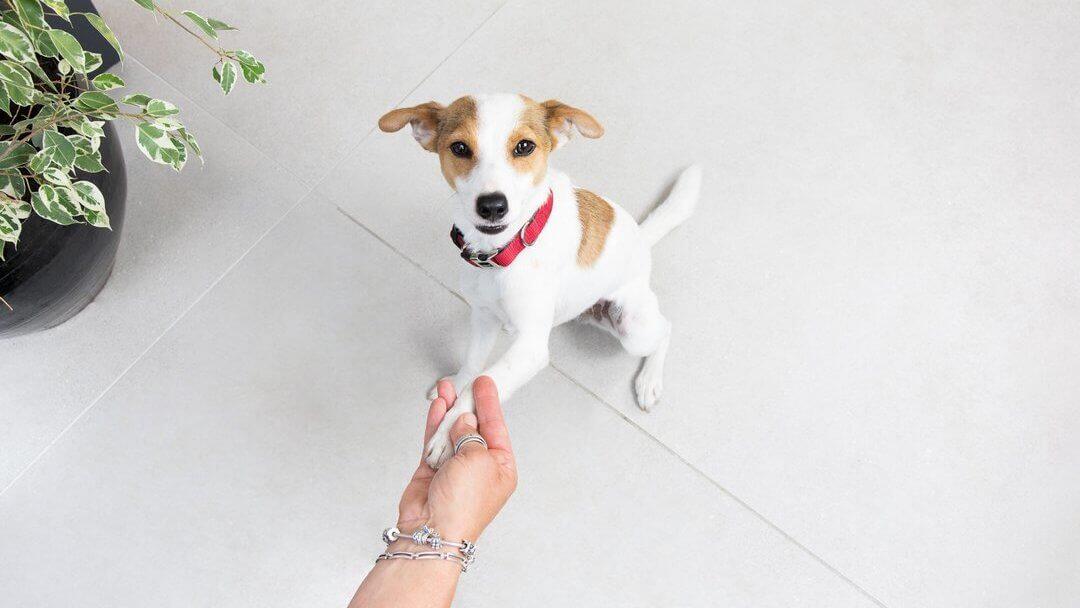
Have you ever heard of meditation for dogs? Yes, you read that right – it seems that meditation isn’t just for people anymore! As a dog owner who wants only the best for their furry friends, you might want to give it a shot. Dog meditation – or at least teaching your dog to relax and chill - can be a great way of enriching the relationship you have with your furry friend and bring you closer together.
Many dogs are never taught how to have an ‘off switch’ and are on the go all the time. This is stressful for them, it’s stressful for you, and this lack of canine down time can lead to behaviour issues. So it’s time for you both to learn to chill out a bit.
If you feel like spending more time together with your dog and getting to know each other better, practicing mindfulness and inner peace can be a great option for you alongside all the other activities that you share together. But first, let’s find out what the so-called dog meditation is, how it works, and if it brings any benefits for both you and your pupper.
What is meditation for dogs?
What is sometimes described as ‘dog meditation” is the process of sitting alongside your dog and trying to reach a calm and mindful state – or in your dog’s case, learning that not all activities that you do together involve activity, and a key life skill that every dog needs to be taught is just chilling when your person is relaxing. Although to start with, it might seem difficult to get your hyper-active dog to switch off and relax, with practise, they will begin to realise that this is a time for calmness, and they will start to relax too.
By practicing this kind of meditation with your dog regularly, you can strengthen your bond and create a deeper connection with them – but more importantly, it gives you the opportunity to do something with your dog where you can begin to become more mindful and settled.
How does mindfulness for dogs work?
We have no idea what goes on in our dogs’ minds when they are just chilling out. Dogs are experts at being completely present and mindful – they do not focus on things past or worry about the future, they just live in the moment. That is part of what we humans are aiming for when we mediate. For our dogs, we want to teach them that a lot of their life with us is going to be fairly boring.
Yes, there will be great walks and fun games and lots of love and attention but also there will be a lot of time when we just want them to be settled and relax. That is one of the most important things we can teach our dogs – and one that will make our lives so much more harmonious. In other words, when we decide to practice mindfulness with our dogs – or ‘dog meditation’, it might be useful to start to think more like a dog and be ‘present’ and encourage our dogs to be able to be more like us and have down time.
Do this at a time when your dog has used up some of their energy reserves – so after a walk or a training session. They will not settle if they are bouncing with canine energy!
Find a calm, quiet space that is warm and comfortable. Make sure you have something soft underneath you, and that your dog has a bed, so they can settle comfortably too. In your early days, have something that your dog can focus on that will keep them in the one place such as a lick mat or a snuffle mat. These are quiet, settling enrichment toys that will stop them from thinking that you getting onto the floor is the start of a great game and that they should leap all over you!
Find a position that is comfortable for you. Sitting cross-legged is traditional but few people can sit that way comfortable for long so you can kneel, sit with your back against furniture or even lie down on your back. Give your dog the treats that you have chosen on their bed and then get yourself into position.
Start by focusing on your breath – count your breathes in and out, and focus on each of the four parts of the breath (in, pause, out, pause) Each repeat should help calm your mind and bring your focus to your body and to the here and now.
You can shift your mindful focus to your dog and think about your relationship together, the way they trust you to take care of them, the bond you have between you, and the joy they take in life. If you find your mind wandering, go back to thinking about your breathing so you can re-focus back on your dog.
As generally instinctual animals, it is likely (possibly with practise!) that your dog once they have finished their treat, will start to be able to follow your cue and relax and match your energy. If you are trying to reach a calm state, it’s likely that your dog will also try to be more relaxed. Plus they will learn that there are times when they will still be with you, but it’s all about relaxation and calm.
Ways to meditate with your dog
Dog meditation doesn’t work the same for everyone so it’s key that you try different ways of meditation and figure out what clicks for you and your dog. Here are some options of mindfulness for dogs you can explore:
Spending quality time together
When trying to meditate with your dog, it helps to stick to a routine by setting up a place and a time for it in a quiet room in the house where you won’t be disturbed.
Watching your dog
While this isn’t part of any sort of meditation, looking at your dog interact with their surroundings can help you become far more mindful and in the moment with your dog, calm and discover things you didn’t know about them, like how they experience the world around them or what brings them pleasure. Additionally, by looking at them and interacting with them calmly, you release oxytocin. Oxytocin has many benefits, not only for reducing anxiety but may also have beneficial effects on your heart.
Listening to music
Many find that music can be calming and soothing for dogs. If your furry friend enjoys music, you can pop those on and just enjoy them together. Many dogs owned by musicians enjoy being with their person while they are playing – so they obviously enjoy sharing our pleasures too. There are also plenty of music pieces online specifically made for dogs, it’s worth trying them out too!
The good thing about meditation for dogs is that these moments don’t necessarily have to be planned and can happen spontaneously as well. If you’re sitting in a quiet place on your phone and your dog joins you, you can take advantage of the moment and ditch the phone to focus on your dog instead. They will feel appreciated and will enjoy spending some quality time together.
Benefits of meditation for dogs
Meditating with your dog can help you relieve stress, and it can also be an emotionally nourishing experience. Here are some of the many benefits of meditation for dog owners:
- Reduces stress and anxiety
- Improves emotional well-being
- Can boost sleep quality
- Improves memory and focus
- Can help better manage pain
- Leads to deeper trust
For dogs, it is a chance to learn the valuable life skill of settling and relaxing, and that life isn’t always ‘on the go’. Many family dogs in a busy household are worried about missing out so they are always awake and alert in case something is going on that they might be missing out on. This leads to lack of sleep – which in itself can lead to behaviour issues such as irritability, barking, lack of focus, over-excitability, grabbing at clothing and the lead, and even aggression. This is especially true in adolescent dogs.
Dogs love companionship and meditation can help them feel more connected to you. So, why not give it a try and see the benefits for yourself? Get your furry friend, find a calming space and get ready to feel relaxed!
Are you having a hard time figuring out your dog’s emotions? Learn more about their behaviour by reading Understanding Dog Body Language next.












